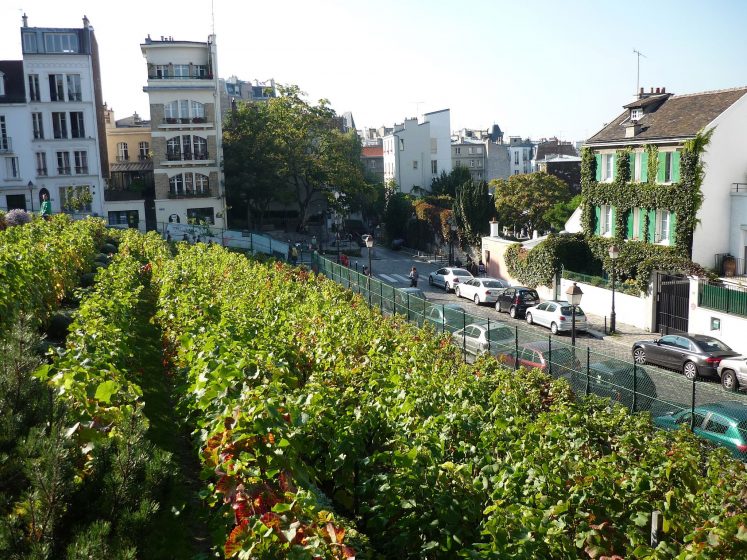Not known Facts About City Blooming
Not known Facts About City Blooming
Blog Article
The Definitive Guide for City Blooming
Table of ContentsSee This Report about City BloomingThe Only Guide for City BloomingThe Single Strategy To Use For City BloomingThe Best Strategy To Use For City Blooming4 Easy Facts About City Blooming Explained
Fascinated in growing food for sale in the City of Chicago? Thinking of starting a community yard? Changes to the Chicago Zoning Regulation permit farming uses like area gardens and city ranches in many parts of the city. Below is a listing of often asked concerns concerning the policies and regulations that cultivators need to take into consideration when intending a city agriculture task.
The zoning amendment does not modify any kind of various other codes taking care of composting, structure authorizations, buying or renting City had property, business licenses or environmental contamination. There are existing codes that manage these issues and they remain completely result and may apply to your task. Community gardens are generally owned or handled by public entities, public organizations or community-based organizations and preserved by volunteers.
Urban ranches grow food that is planned to be offered, either on a not-for-profit or for-profit basis. As a result of their business purpose, metropolitan farms require a service permit. Yes. An area garden is allowed to market surplus produce that was grown on website if the sales are accessory or subordinate to the yard's main objective described over.
Fascination About City Blooming
Composting is permitted however just for plant material that is produced and used on website. The amount of garden compost material can not exceed 25 cubic lawns at any type of provided time according to the criteria in 7-28-715 of the City's Municipal Code. Yes. Since the dirt at the majority of new yard sites requires changing, garden compost, dirt, timber chips, or various other materials can be obtained to create or improve the growing area - garden care.

If a structure authorization is called for after that the hoophouse will be considered an accessory building. You can discover even more regarding the building authorization demands by getting in touch with the Department of Buildings. The 25,000-square-foot size limit is planned to avoid a solitary neighborhood yard from dominating a provided block or diminishing the block's existing property or industrial personality.
The limit does not use to yards situated in Public Open Room (POS) districts. Can there be more than one community garden that is 25,000 square feet on a solitary block? Fencing is not needed, however, yards that have large auto parking locations might be needed to mount secure fencing or various other landscaping attributes.
The 3-Minute Rule for City Blooming
B1 & B2 districts call for that all commercial usage tasks be carried out inside. R areas limit business task. The laws mirror the purpose and intent of the Zoning Code. Is secure fencing needed for urban farms? Yes. Fences might be called for, together with landscape design and testing, for sure parking areas and outside work or storage areas relying on area and the details task taking location.
Yes. Urban farms need building permits and zoning approvals prior to construction. Various other kinds of city testimonial may be needed depending on details frameworks, tasks, size, landscape design, licensing, public heath and stormwater management issues. A number of these needs are determined in the project layout or permitting process, nonetheless, the candidate might be responsible to separately determine certain licenses or allows that might be required.
Yes. The kind of license is identified by what is happening at the site. The Department of Business Affairs and Consumer Defense can assist figure out the specific type of business permit that's needed. Yes. Off street car parking is required for many commercial jobs in Chicago. The required variety of garage is based on the variety of staff members servicing site and not the square video of the growing space.
City Blooming for Beginners

Yes. An urban farm can sell garden compost material created on site, nonetheless, the procedure has to abide by the regulations in 7-28-715 of the Chicago Municipal Code. Yes. Aquaponic systems are permitted indoors on city ranches in many zoning districts. However, a zoning evaluation and building license is called for in order to mount structures or systems and a company permit is needed as defined above.
As much as 5 hives or nests of honey may be kept as an accessory usage. Beekeepers should sign up with the Illinois Department of Agriculture. To learn more concerning the proposed zoning change you may contact the Division of Real Estate and Economic Development, Bureau of Planning and Zoning at 312.744.8563.
Farming in cities and city locations An urban ranch in Chicago. Urban agriculture describes various techniques of cultivating. https://city-blooming.webflow.io/, handling, and dispersing food in urban areas. The term likewise relates to the area activities of pet husbandry, tank farming, beekeeping, and gardening in an urban context. Urban farming is identified from peri-urban agriculture, which happens in backwoods beside suburbs.
The City Blooming PDFs
It can entail a movement of natural growers, "foodies" and "locavores", who seek to form socials media started on a shared ethos of nature and area holism. These networks can establish by method of official institutional assistance, ending up being integrated into neighborhood town as a "change town" movement for sustainable urban growth.
In either instance, the more direct accessibility to fresh veggie, fruit, and meat products that might be understood with metropolitan farming can boost food safety and food safety and security while reducing food miles, bring about lower greenhouse gas emissions, thus adding to environment adjustment reduction. Some of the initial evidence of urban farming comes from Mesopotamia.
Report this page